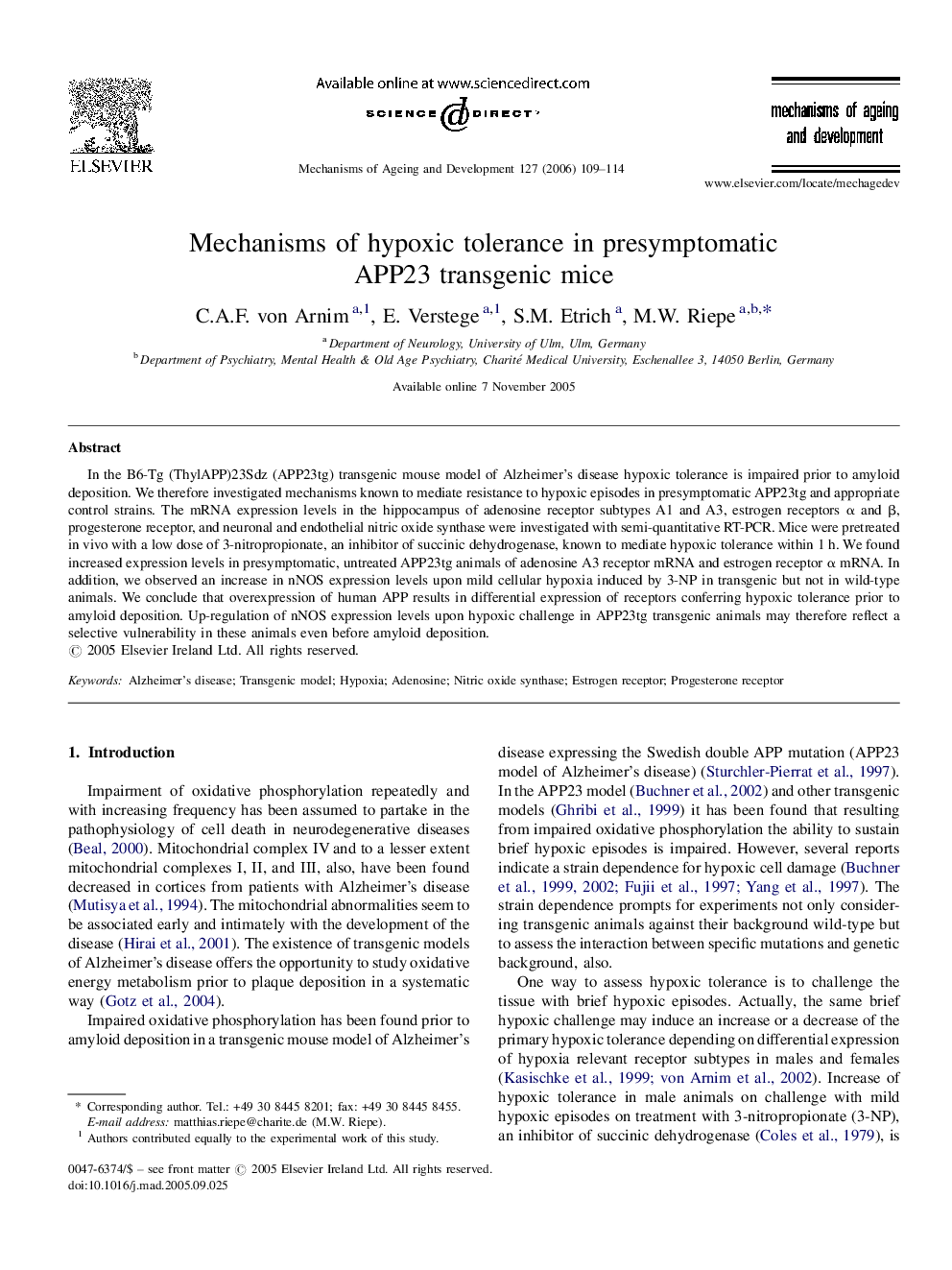| Article ID | Journal | Published Year | Pages | File Type |
|---|---|---|---|---|
| 1920001 | Mechanisms of Ageing and Development | 2006 | 6 Pages |
In the B6-Tg (ThylAPP)23Sdz (APP23tg) transgenic mouse model of Alzheimer's disease hypoxic tolerance is impaired prior to amyloid deposition. We therefore investigated mechanisms known to mediate resistance to hypoxic episodes in presymptomatic APP23tg and appropriate control strains. The mRNA expression levels in the hippocampus of adenosine receptor subtypes A1 and A3, estrogen receptors α and β, progesterone receptor, and neuronal and endothelial nitric oxide synthase were investigated with semi-quantitative RT-PCR. Mice were pretreated in vivo with a low dose of 3-nitropropionate, an inhibitor of succinic dehydrogenase, known to mediate hypoxic tolerance within 1 h. We found increased expression levels in presymptomatic, untreated APP23tg animals of adenosine A3 receptor mRNA and estrogen receptor α mRNA. In addition, we observed an increase in nNOS expression levels upon mild cellular hypoxia induced by 3-NP in transgenic but not in wild-type animals. We conclude that overexpression of human APP results in differential expression of receptors conferring hypoxic tolerance prior to amyloid deposition. Up-regulation of nNOS expression levels upon hypoxic challenge in APP23tg transgenic animals may therefore reflect a selective vulnerability in these animals even before amyloid deposition.
